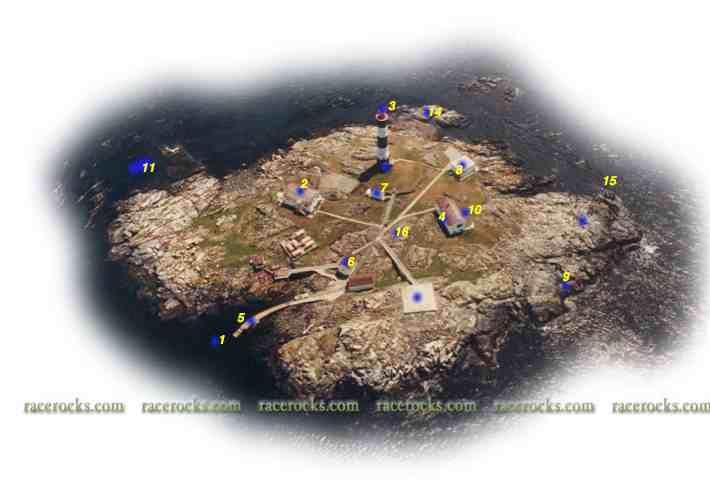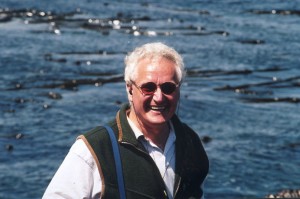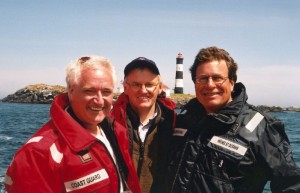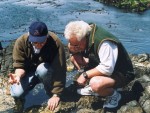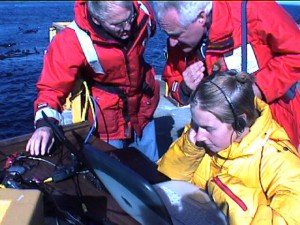racerocks.com: Education and Research in Real Time
By Garry Fletcher
There are a few places on earth where a person who is naive in the principles of ecology can still have that feeling of “ah ha! Now I understand”. I understand why organisms are so intricately tied to their environment; how animals interact for purposes of food and mutual assistance; how many birds, plants, mammals and invertebrates are so closely tied together; how human intervention can be disruptive to natural things; and why it is essential to keep places like these preserved forever. The small Archipelago of islands in the Strait of Juan de Fuca at the Southern tip of Vancouver Island – known as Race Rocks by those who live here now, but as Xwayen, the place of the swift flowing water, by previous generations of First Nations people – is such a place.
So it was no wonder that Race Rocks attracted our attention at Lester B. Pearson College as far back as the late 1970’s. In 1980, when the area was established as a Provincial Ecological Reserve, the College assumed a role of Stewardship and started a program of basic research and recording of the features of the area. It takes only a few hours in any kind of weather to realize the value of the place as an educational resource. Through the years, it has promoted protection of and education about the unique ecosystems Race Rocks.
Their size and location make it difficult to encourage many people to visit the islands. So, in order to expose their wonders to the outside world, we collaborated with the B.C. Parks, the Royal BC Museum, and volunteers with expertise in the telecommunications industry to produce a week-long series of live T.V. Programs,”Underwater SAFARI ” in 1992. After that experience, I knew we just had to find a way to make this resource available to the world – without attracting so many people that the very values we were so enthusiastic about were threatened. By 1999, webcasting in real time had become a possibility, and so, with seed money from the Millennium Partnership Fund of Canada, racerocks.com was born.
From the beginning of the project, we required racerocks.com to remain universally accessible for the purposes of Education and Research, and we limited commercial advertisement to a minimum, with recognition of sponsors and supporters included in a special designated part of the website.
My priority with the website has been to include the ecology of Race Rocks as a resource for the objectives of the Biology and Environmental Systems classes at Lester B. Pearson College. In addition, we have highlighted the resource material links for the Grade 11 Biology curriculum for the Province of British Columbia. For the past year, the educational branch of Apple, the Apple Learning Interchange, (ALI) has hosted our video and audio feeds on the Akamai network. We have also collaborated with ALI to develop more curriculum links and to make “units of practice” accessible to all schools. Recently, with their assistance, we have added a Conference Room – a chat site for our cameras, and a discussion forum.
Collaboration with outside researchers has added another valuable educational dimension to the website. Several pages are now available profiling the work of scientists in documenting the physical and biological processes of Race Rocks.
We have also been working with local First Nations to build the stories and explanations of the central role of intertidal ecosytems in the lives of First Nations people, past and present. The theme of the 13 moons of the Coast Salish people will soon be a focus of some of the educational materials available on the website for school children. Eventually, sharing in the management of the resources of the Marine Protected Area with First Nations will provide a great educational angle.
Pearson College students play a major role in the production of Race Rocks content for the internet, making racerocks.com an educational experience for those who create and maintain it as well as for those who visit it.. In the past year, students have worked at least one afternoon a week learning to use programs like Adobe Go-Live, Adobe Photoshop, Quick TimeVR, iMovie , and Sorenson Broadcaster . On six occasions students were involved in live webcasts for presentations I was making in California, Victoria, and New York. One student presented to a conference in Halifax while I was back at Race Rocks making an underwater presentation with the other students of the racerocks.com activity.
Two students, Damien Guihen from Ireland and Jean-Olivier Dalphond from Quebec stayed on at Race Rocks for two weeks after the end of the college this past summer, working with the computers producing Virtual reality 360 degree scenes and video for the archives while diving frequently to observe and gather data.
Damien, who is back as a student this fall, has already realized the valuable contribution he will be able to pass on to new students in the activity. He summarized his experience in June like this.
“This summer I spent nearly two weeks on Race Rocks working with digital video, 360 degree panoramic movies, sensor upkeep and diving. The results of some of my work are available for view at www.racerocks.com/racerock/archives/vrindex.htm . From this page you can see a 360 degree view of the island from many points on the island and one from underwater. . . From my time spent on Race Rocks throughout the year I have learned many things about boats, video and, of course, diving. In the last two terms, I have developed a love for the ocean. As I live inland in Ireland, I have realized since I came home exactly how difficult it will be for me to live anywhere without a view of the ocean within five minutes walk. . . Diving at Race Rocks has presented me with some of the most beautiful and thrilling sights that I have seen in my life and provided me with a number of skills, many of which are as relevant in everyday life as they are underwater.
… Race Rocks is almost a second home for the students who get really involved with the project . . . and a magnificent case study for environmental systems and biology students as it possesses not only a dazzling biodiversity but also a variety of conditions such as the intertidal zones. Its fast, mineral rich currents and algae covering give it a fantastic scope for the study of ecosystems.
Students at Pearson College are not the only ones who benefit from this unique educational resource. Throughout the year we have conducted scheduled webcasts specifically for people in locations all over North America. From Victoria to New York, from Halifax to California and from Toronto to Texas, we have had audiences watching action on Race Rocks through the internet via our three constant live cameras and our mobile camera . . . This technology means that we can now reach classrooms anywhere with a speedy connection to the internet. . .”
Damien will share the skills he developed in computer graphics during his two-week stay on the island with other members of the racerocks.com activity this year.
A graduating student of Pearson College, Jean-Olivier has become an expert in the production of QuickTime movies for racerocks.com using iMovies . In the weeks at Race Rocks he was able to do another nine movies to add to our archives site.
“For the first two weeks of June, I have resided on Race Rocks with Damien Guihen from Ireland. We had a great time out there! Our main focus was to pursue the work done with the website, www.racerocks.com, throughout the school year. I’m now graduated from Pearson, and I wanted to spend some more time on the island before I left. I’m must say I’m really starting to like this place!
My ‘specialty’ this year was with underwater video and video editing. I have had the chance to not only dive in the unique waters of Race Rocks, but also to make use of my interest in images, to share their beauty with everyone via the Net.
Sometimes when I sit back and look at the window overlooking the ocean, I feel very lucky. Around me the inspiring scenery is one that I would hate seeing spoiled. The new Marine Protected Area designation of the surrounding waters of Race Rocks makes me feel safe. It really became a goal for me to try to show it to people who aren’t here, to try to capture of bit of the generosity of sight present here to show to people.
The sea water doesn’t show its fragility to the first look, but requires a close relationship with it, whether it is on land or underwater. The sensitive activities that take place are for me a natural order that need to be left to themselves to develop and evolve. Being around here this summer was great for that. A few people with real interest in the place came to visit. It was another opportunity to share my ideas. I have learned a lot here.”
The racerocks.com site has proven to be of great value for my own class instruction in biology and environmental systems. We use the opportunity of the mobile camera to do live webcast discussions in class and, as an added advantage, we can take a recorded one hour video and play it directly through the broadcaster. I have used this technique for several school visits this year. Four grade seven students with us on the island can serve as proxies for the rest of their class, allowing us to limit the number of people on the island while maintaining the personal connection with the classroom.
I have designed several labs using the materials on the web site, with new ones always in the planning stages. A lab on tidepools, with the detailed directions for measurement from digital images, helps students quantify bacterial growth from digital images of colonies. The transect files serve a valuable purpose in providing students with real data for detailing parameters of ecological niches of organisms.
Students make a lasting contribution by providing a digital legacy of their work on the internet, thus adding to the accumulated information on the unique ecosystems of the islands. Each year some students choose to do a biology or environmental systems extended essay or a research project on Race Rocks. Although these research papers are preliminary studies, they add greatly to the content of the site and demonstrate the wealth of data that can be obtained there.
Environmental factors at Race Rocks form the core of our next phase of work. Environmental Sensors are being installed in 5 different ecosystems here and real time readouts will be available on the website. By September, students will have access to a wealth of data and a database that will allow analysis and graphing of the data.
The technology of racerocks.com has enable our own and many other students to extend the boundaries of the classroom to experience a sensitive ecosystem while ensuring the ecological integrity of that ecosystem.
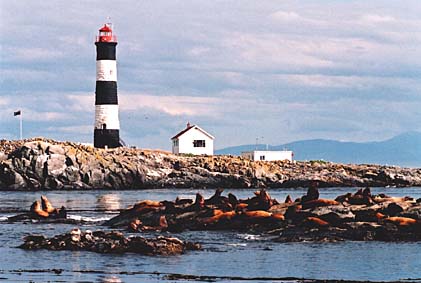
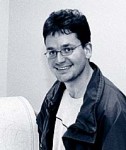
 Diane Haughland is a participant in the SPARK program (Students Promoting Awareness of Research Knowledge), funded by UVic, NSERC and SSHRC.
Diane Haughland is a participant in the SPARK program (Students Promoting Awareness of Research Knowledge), funded by UVic, NSERC and SSHRC.
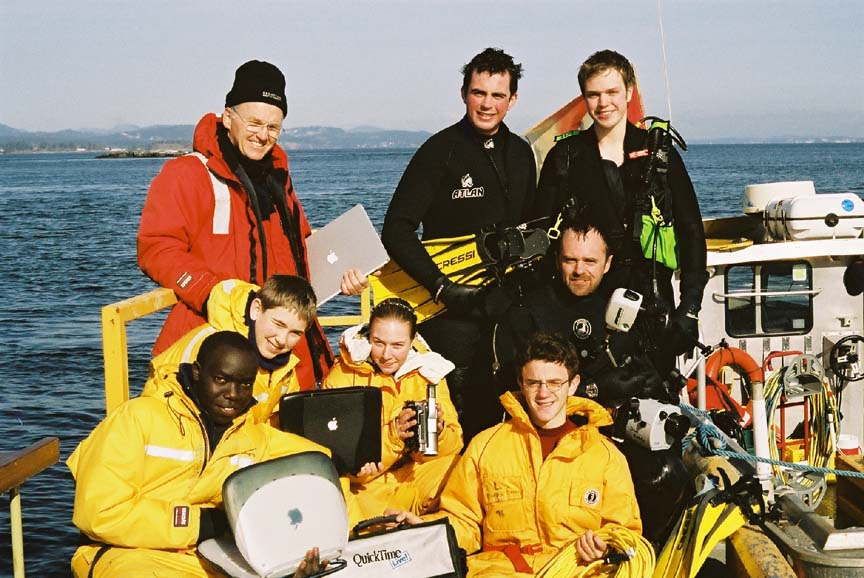
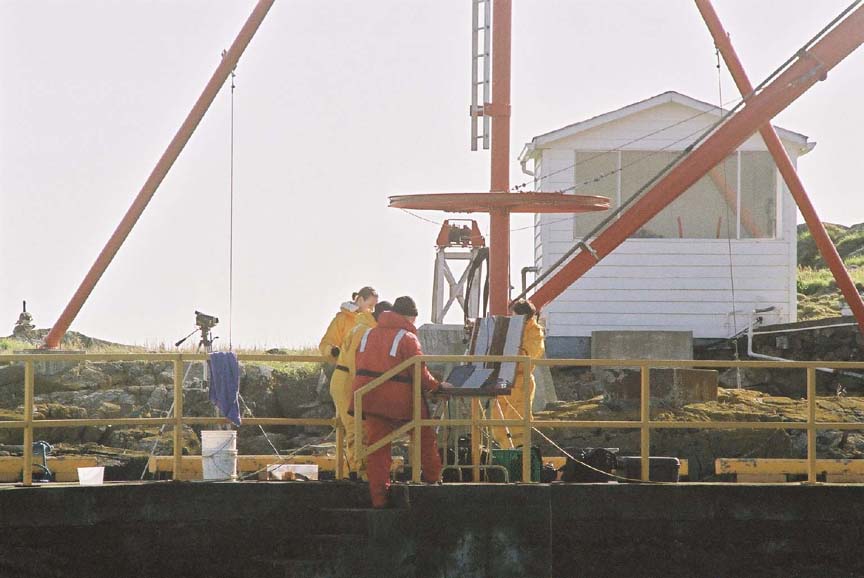
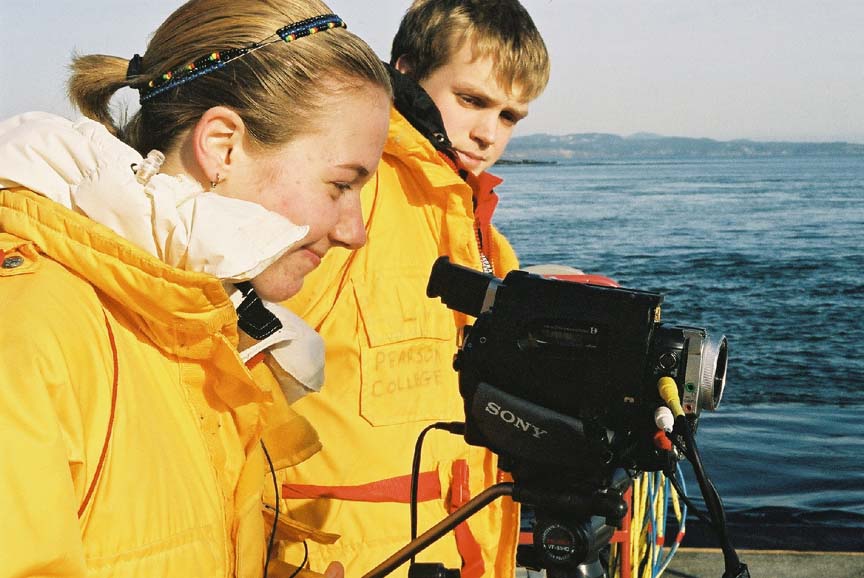
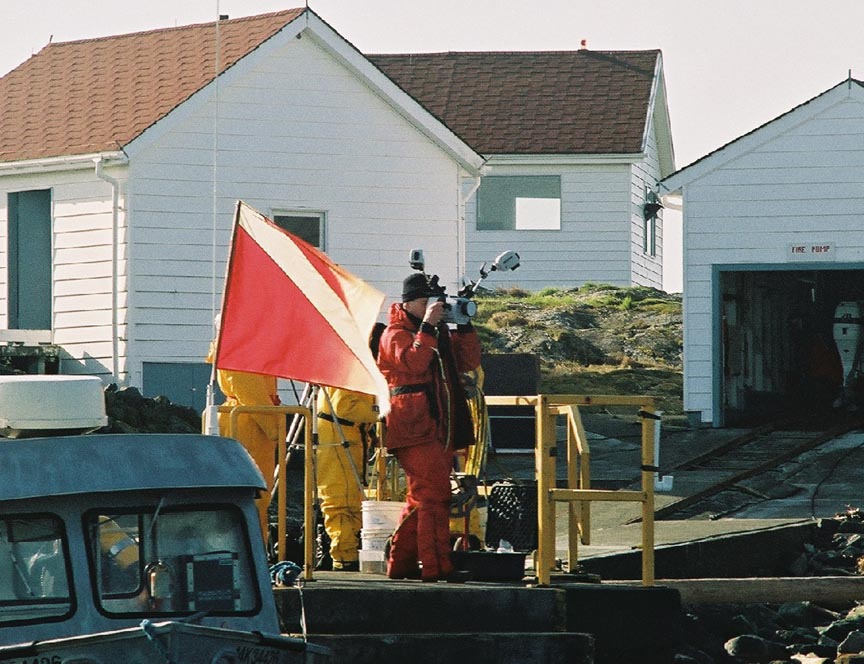
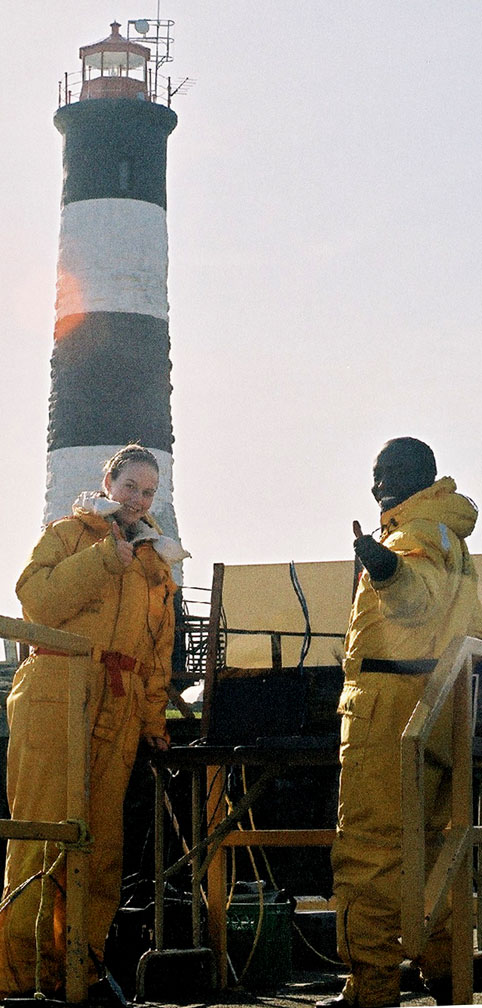
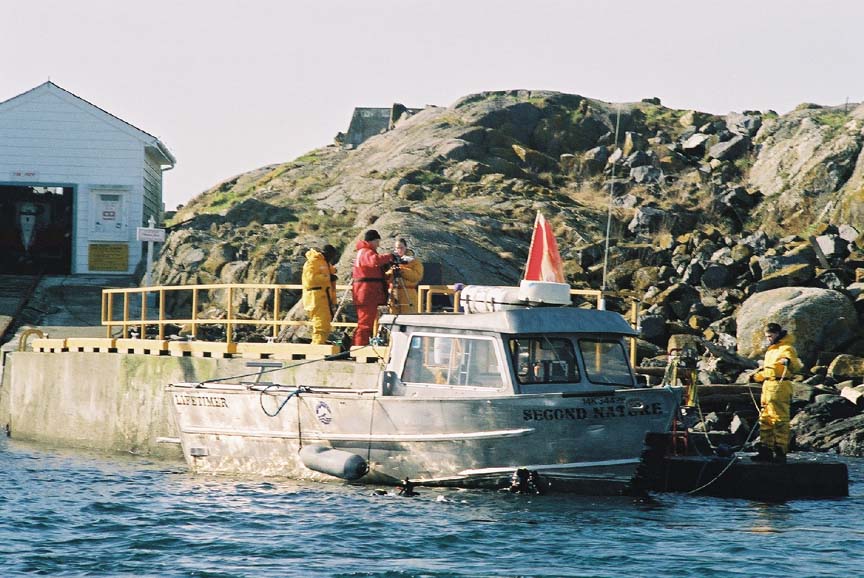

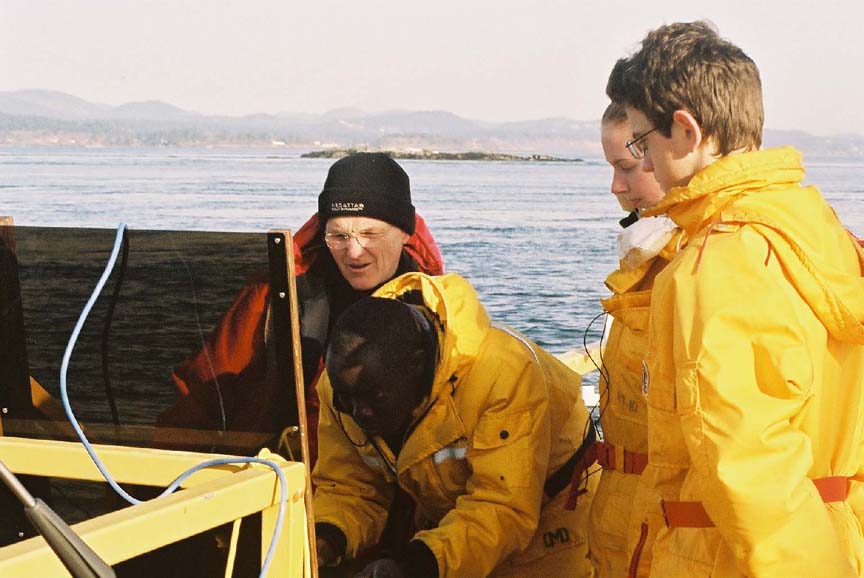
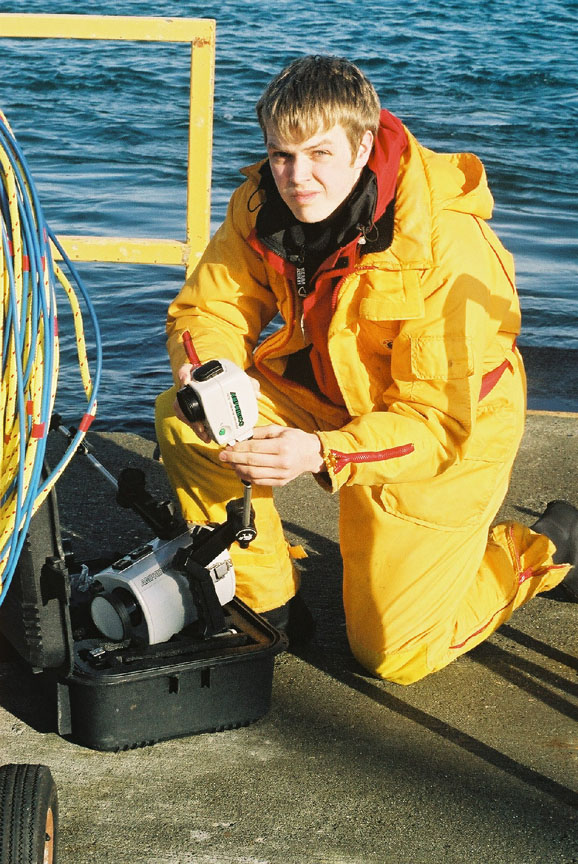
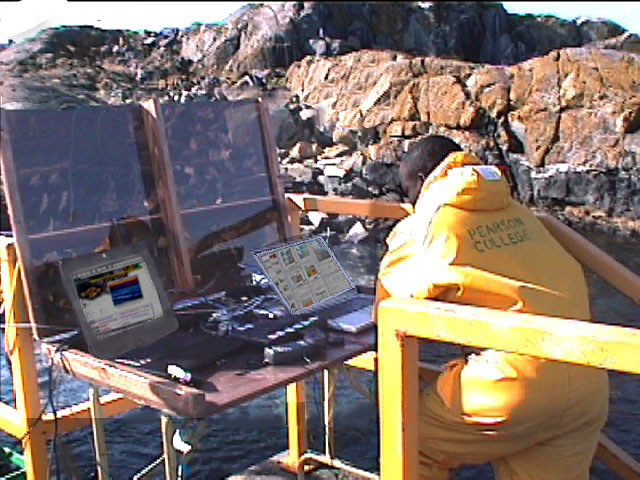

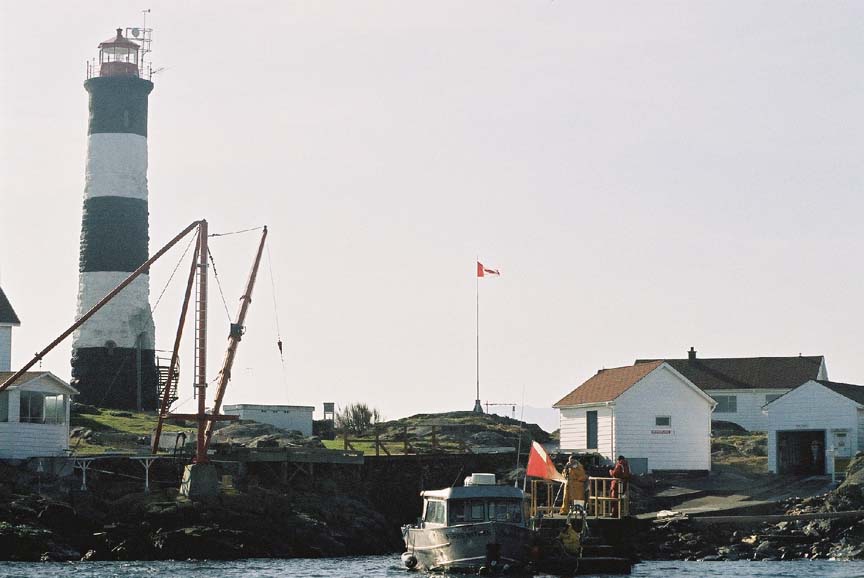
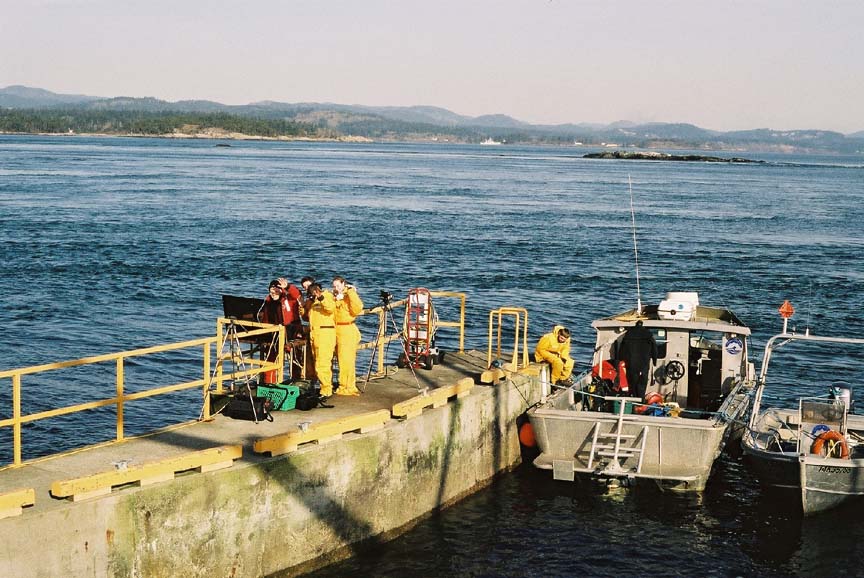
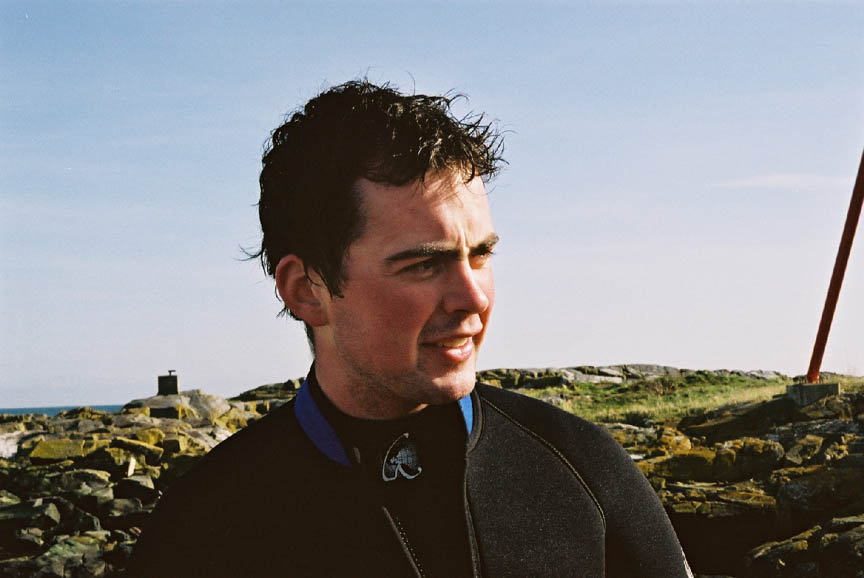
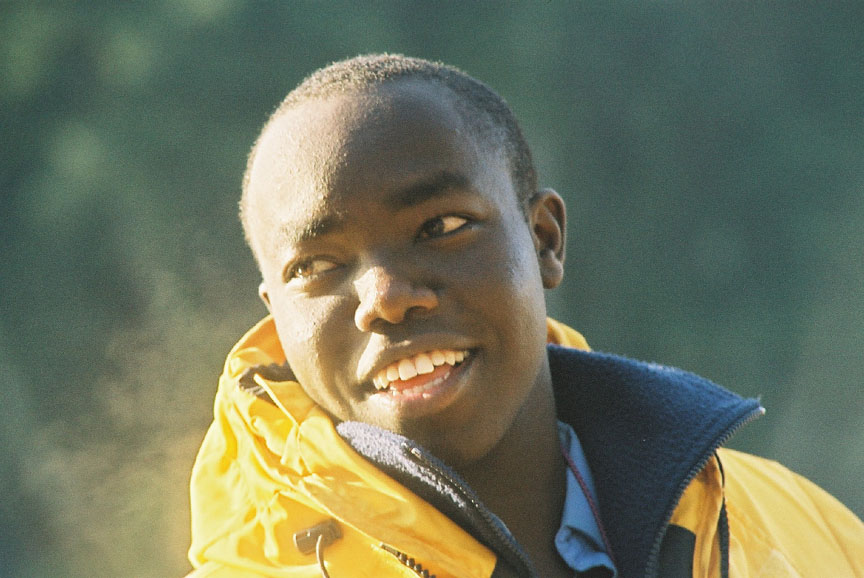
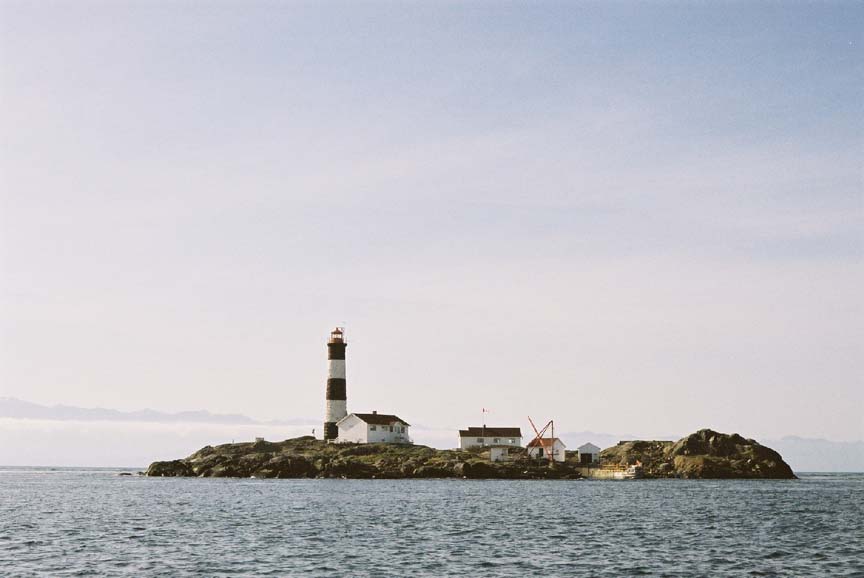

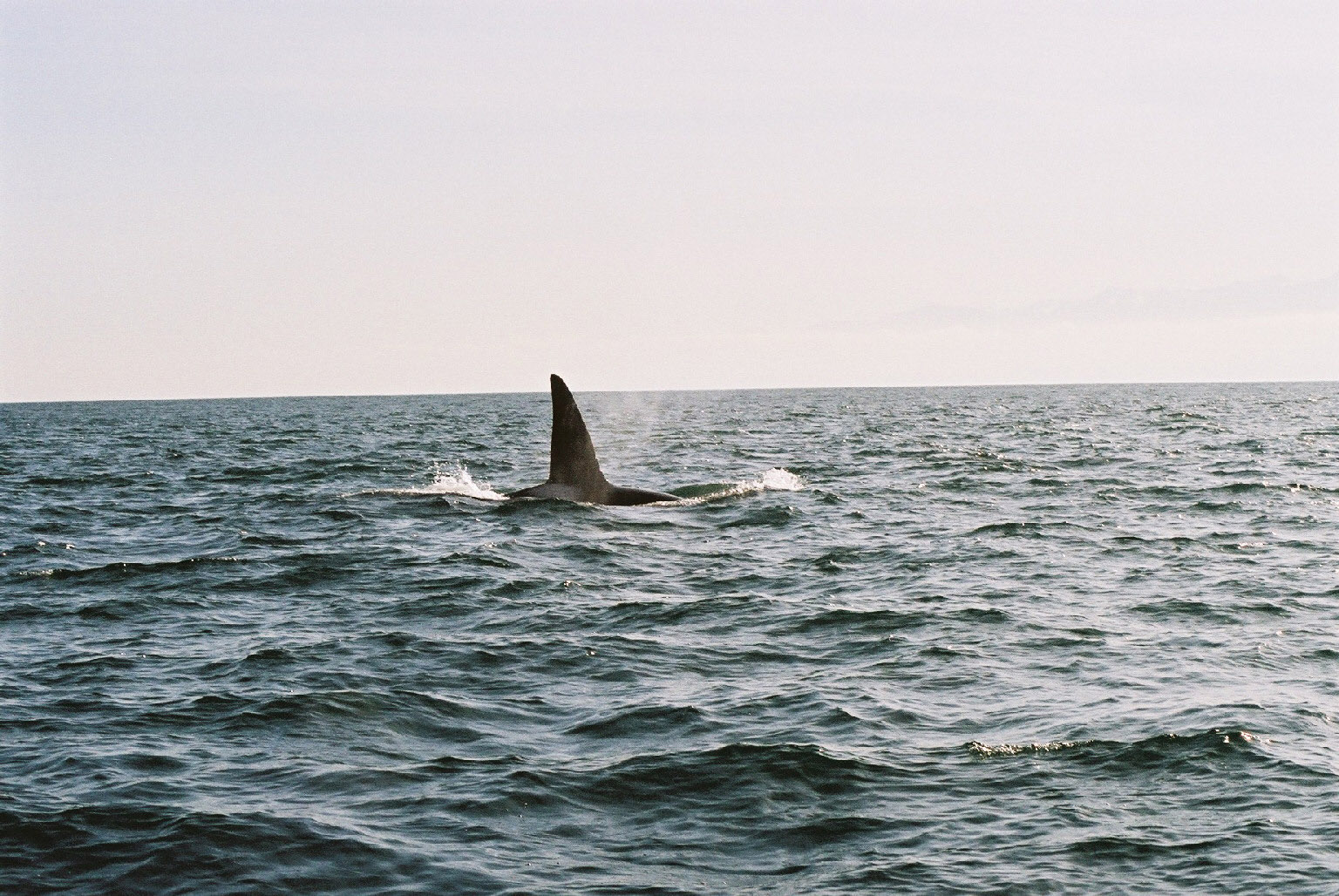



 September 11, 2001 We met this afternoon for the first session of the racerocks.com activity at Lester Pearson College. A tragic day for all of us as events unfold in the US. After a discussion of how the racerocks.com program has developed over the past few years, and projections as to where we may take it from here, we ran a short sample webcast from the biology lab. We were able to show the eight new first year students in the activity the process involved in a webcast.
September 11, 2001 We met this afternoon for the first session of the racerocks.com activity at Lester Pearson College. A tragic day for all of us as events unfold in the US. After a discussion of how the racerocks.com program has developed over the past few years, and projections as to where we may take it from here, we ran a short sample webcast from the biology lab. We were able to show the eight new first year students in the activity the process involved in a webcast. 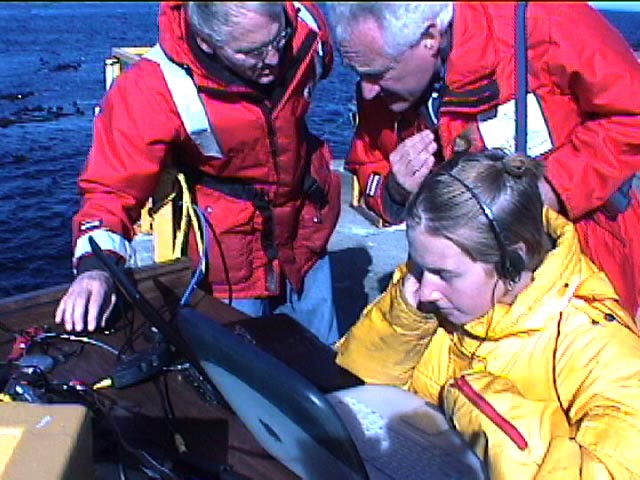

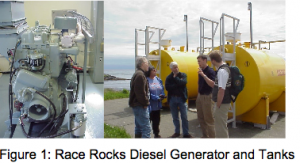 s including Pearson College and The Canadian Coastguard. The environmental integrity of the site is often jeopardised to bring diesel fuel to the site and the noise pollution on the site due to the diesel generators is significant. IESVic has stepped forward to evaluate the potential of renewable energy sources on-site to power a sustainable energy system. A preliminary study was performed as an innovative graduate course at the University of Victoria that exposed students to sustainable energy system design. Our conclusion is that with Tidal currents of up to 3.7 m/s, average winds of 21.6 km/h and large amounts of solar insolation, there are ample renewable resources available on the site to develop a sustainable integrated energy system capable of providing reliable power for the site. Race Rocks is therefore ideally
s including Pearson College and The Canadian Coastguard. The environmental integrity of the site is often jeopardised to bring diesel fuel to the site and the noise pollution on the site due to the diesel generators is significant. IESVic has stepped forward to evaluate the potential of renewable energy sources on-site to power a sustainable energy system. A preliminary study was performed as an innovative graduate course at the University of Victoria that exposed students to sustainable energy system design. Our conclusion is that with Tidal currents of up to 3.7 m/s, average winds of 21.6 km/h and large amounts of solar insolation, there are ample renewable resources available on the site to develop a sustainable integrated energy system capable of providing reliable power for the site. Race Rocks is therefore ideally